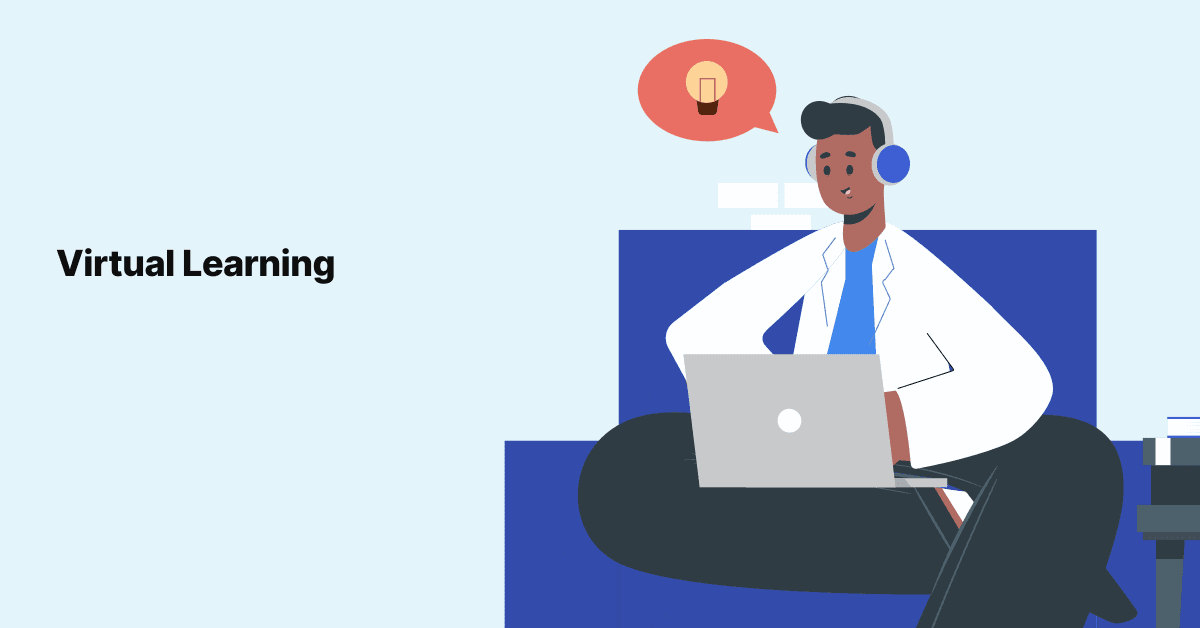
Supporting the Virtual Learning Experience
Virtual learning. What is it? Who does it? And most importantly, who is successful at it?
These are the …

Microlearning is a learning strategy where learners, learn through small precise, bite-sized learning modules that are conceptually easy to learn from. Microlearning is a small part of the e-learning experience.
Micro learning is small and intensely focused learning. These microlearnings are short 1 to 5 minutes videos that are focused on specific processes, skills, or tasks that can be company specific. These are designed so that the learner can accomplish tasks after the microlearning is completed.
Before breaking up your existing lessons plans into short videos of five minutes or less, it’s very important to realize that microlearning are far more than a traditional course’s or a pre-existing module, cut into small pieces. This is highly focused learning so we must remember the full purpose for microlearning.
The true intention of microlearning is to teach the learner, your employee, how to perform a specific process, service or task. This type of learning must be intentionally designed to offer exactly the correct information necessary for the learner to perform this process, service or task successfully. Micro learning training strategy is highly focused lesson plans, focused on specific processes, services, tasks and skills needed for the specific organization. We must also keep in mind that not every company does processes, services, tasks or soft skills that same way. By training the employee the organization’s way it ensures successful performance.
A microlearning system is a method of knowledge acquisition where we’re learning and consuming tasks in small fractions to form a broader and deeper connection to the new knowledge.
An example of an intro script would be: “At XYZ Corp we suggest utilizing dictation in Google Docs – Dictating into Google Docs needs to have Google Docs open on the Chrome Browser. Once your microphone is plugged into the computer and you have launched your Chrome browser you will open your Google Doc, open the new document. In the main toolbar select the Tools button; in the drop down menu you will see under translation the dictation with an icon on a microphone, click on the microphone to enable the device…”
Notice that the only information is pinpoint focused on the actual process. What tools are being used, how to navigate to it and then an example of the use. There are no filler words and no elaborate story of: “Jane the office secretary is working on writing letters and needs to dictate a letter…” that is normally used in full training and has a significant use in most training material. As we know placing the learner in the best context is definitely needed in learning a new skill. In Micro learning we assume that the learner knows where they are and are in the need to learn something fast. If a series of Micro learnings that are tools being used for Jane the office secretary role then the story can be added to the title as a series I.e. “Office Secretary tools for XYZ Corp: Dictation in Google Docs”; “Office Secretary tools for XYZ Corp: Google Doc’s Building E-Forms Surveys” In this fashion the microlearnings are grouped by role and lesson without adding to the length to the video.
Micro learning is quantifiable. Because a microlearning is specific to a process, service and task. Which once taught then can be measured. After an onboarding most companies will track training success by the needed support post onboarding. How many calls to the IT help desk for a specific software program, email issues, printer issues and many more.
The better the training with higher retention the faster the employee gets to the normalization phase and maximizes efficiency. With microlearning we are seeing faster learning in the workspace, with a higher retention.
“Micro learning is cheaper and faster. To-the-point materials take less time to source, produce, maintain, and consume than traditional classroom sessions or longer-form e-learning. This enables under-resourced L&D teams to focus on quality without sacrificing speed, and gives well-resourced teams more ways to make an impact.” (Khurgin, 2017).
People are more engaged and they learn more. Micro learning fits within the time frame of today’s employees. When employees dedicate 1% of their work time to learning we can add these microburst of content into Slack, Monday or any tool the company has for communication to add to the quality of the employee experience.
We see a growing trend with apps like TicToc and now YouTube’s short selections. Content creators are getting millions of views from Micro learning videos. This technology has been in use for industries for the past 15 years but the use of focused Micro learning is gaining momentum. Now it is being seriously considered for training, post training and onboarding training support within large scale organizations. The future is moving to Micro learning for maximum retention and decrease in training time.
Join over 3,200 subscribers and keep up-to-date with the latest innovations & best practices in Healthcare IT.

Virtual learning. What is it? Who does it? And most importantly, who is successful at it?
These are the …

We’ve previously shared some tips for delivering the best Epic training in the healthcare IT space, but as the …

Social distancing doesn’t seem to be letting up any time soon, especially in healthcare settings. Because …